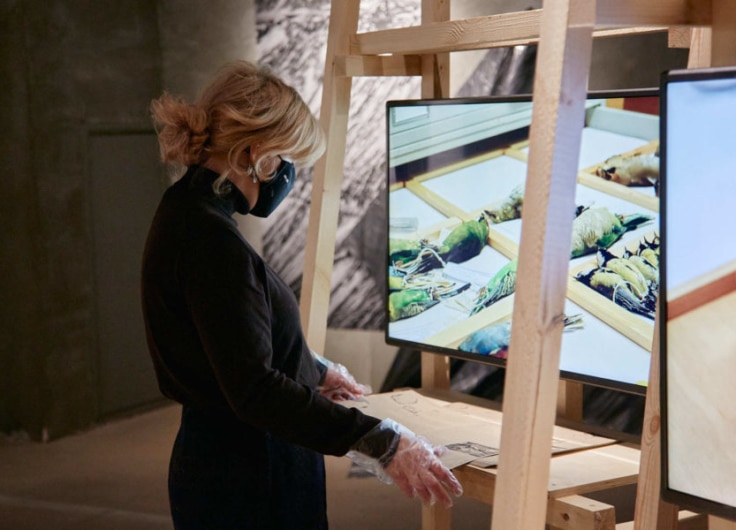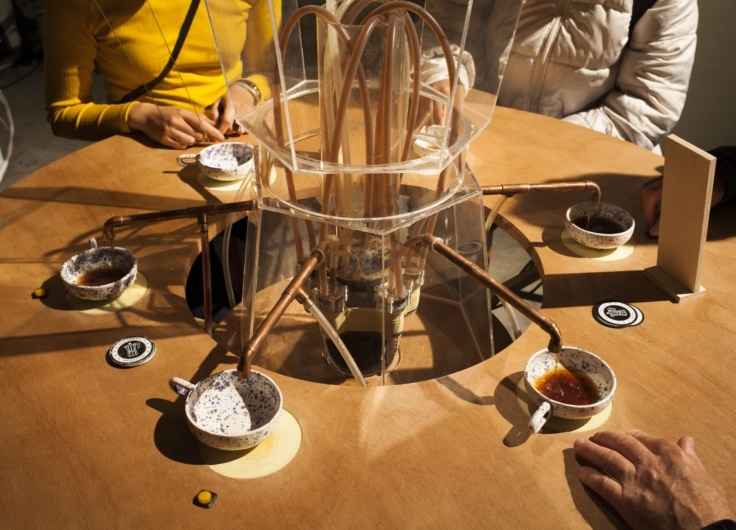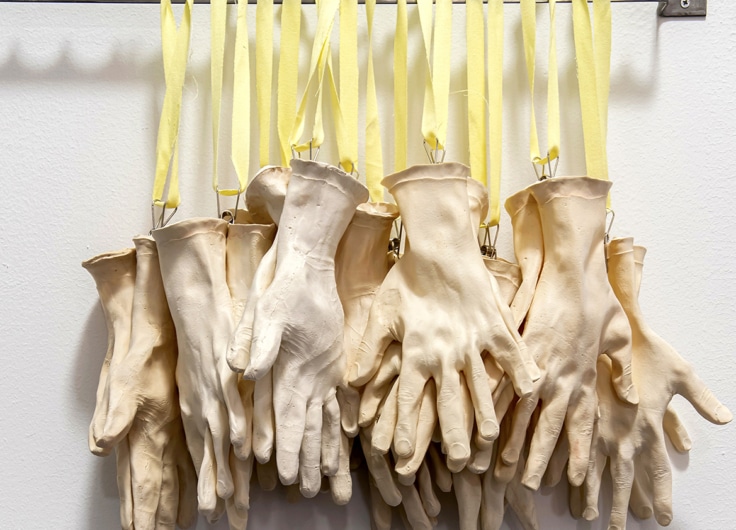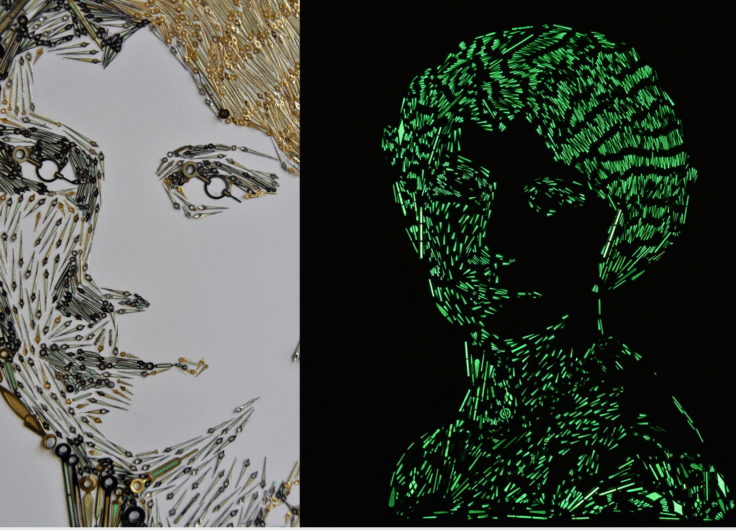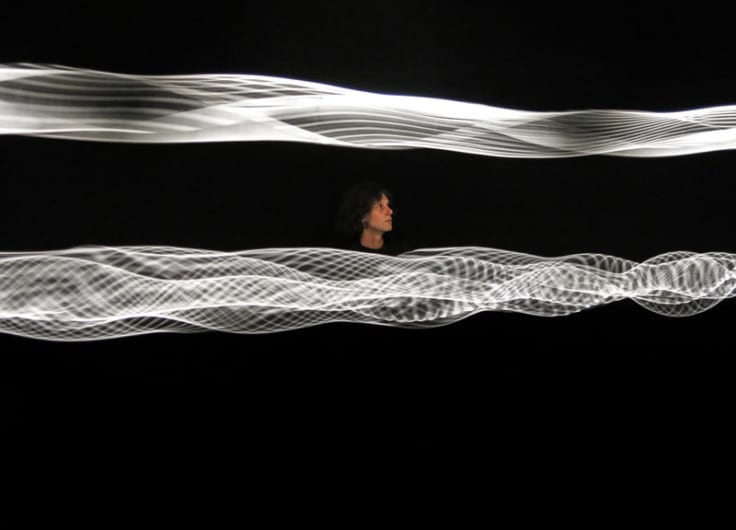Narges Mohammadi Makes Teacups Out of Concrete
The Afghan-Dutch artist Narges Mohammadi designs installations and sculptures like chefs create dishes: bringing together seemingly incompatible forms and materials. With these unexpected combinations, she creates “in-between spaces”, places where everything and nothing happens at the same time.
With the installation Almost There (2020), Narges Mohammadi (b. 1993) makes your gaze and understanding hesitate for a moment. You recognise the shapes – a table, a chair, a coat. But discerning the monochrome material they are made from, happens a little slower. Loam clay is generally a material used to build houses – certainly not for making the things you find here. It is with this that Mohammadi intertwines two different aspects of a house – or maybe even a home. Almost There is a stimulating example of how she makes unexpected connections between shapes and materials.
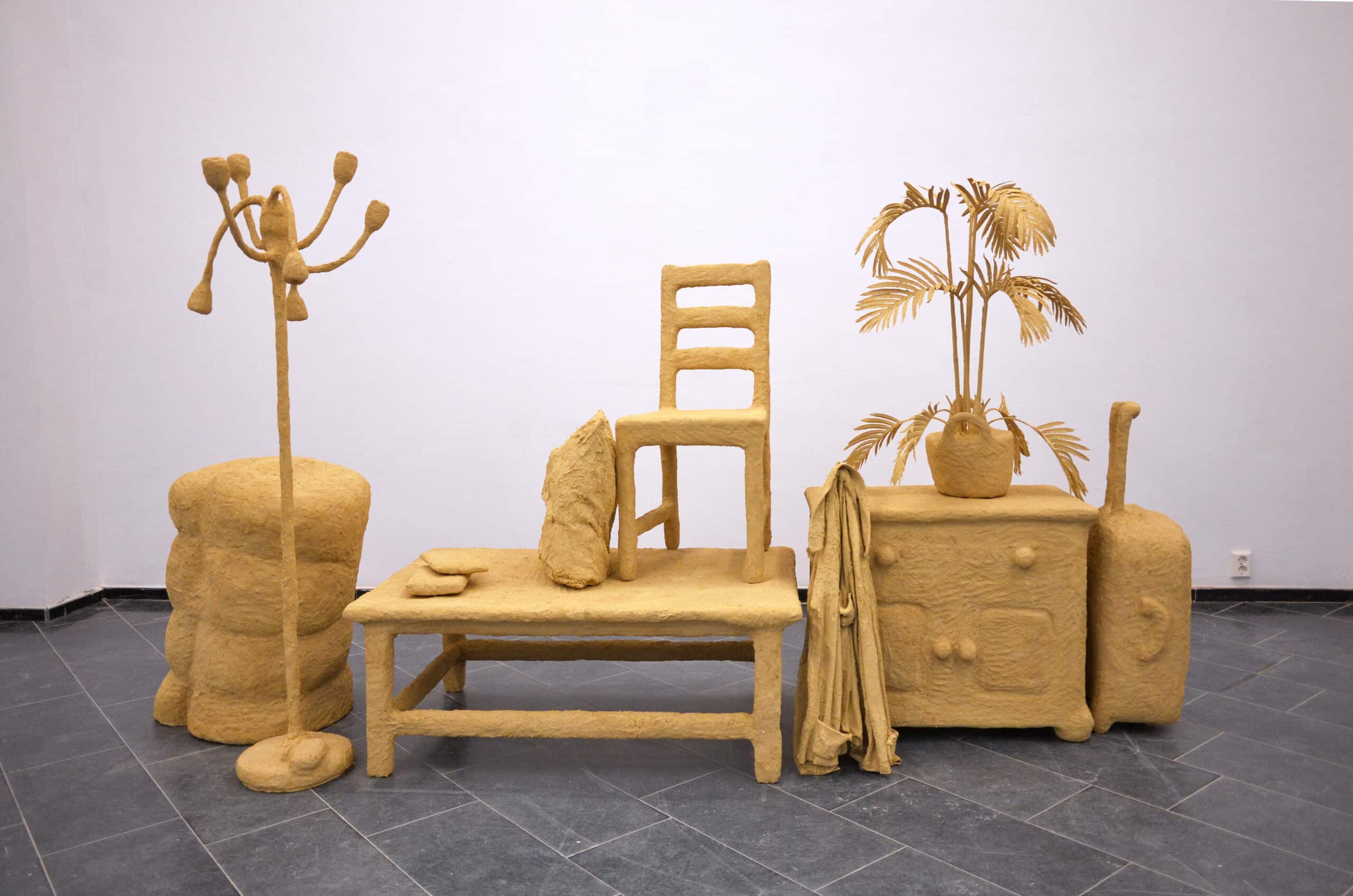 'Almost There', an installation with 350 kg of loam, is a stimulating example of how Mohammadi makes unexpected connections between shapes and materials.
'Almost There', an installation with 350 kg of loam, is a stimulating example of how Mohammadi makes unexpected connections between shapes and materials.© Narges Mohammadi
This kind of remarkable combination of form and material is something that often crops up in Mohammadi’s works. She previously created a travel suitcase made of soap, a bathroom made of straw and a narrow hallway built with no less than 700 kilos worth (!) of a Persian delicacy.
She’s taking a break from a new work she is working on when I speak with her – Concrete Exchange. It will become a concrete teacup, enlarged to monumental proportions. With a big smile, she tells me that she feels a kinship with chefs who bring together seemingly incompatible flavours. Content, material, and form must combine to create a whole in her artworks, she argues – no matter how much those components seem to contradict each other.
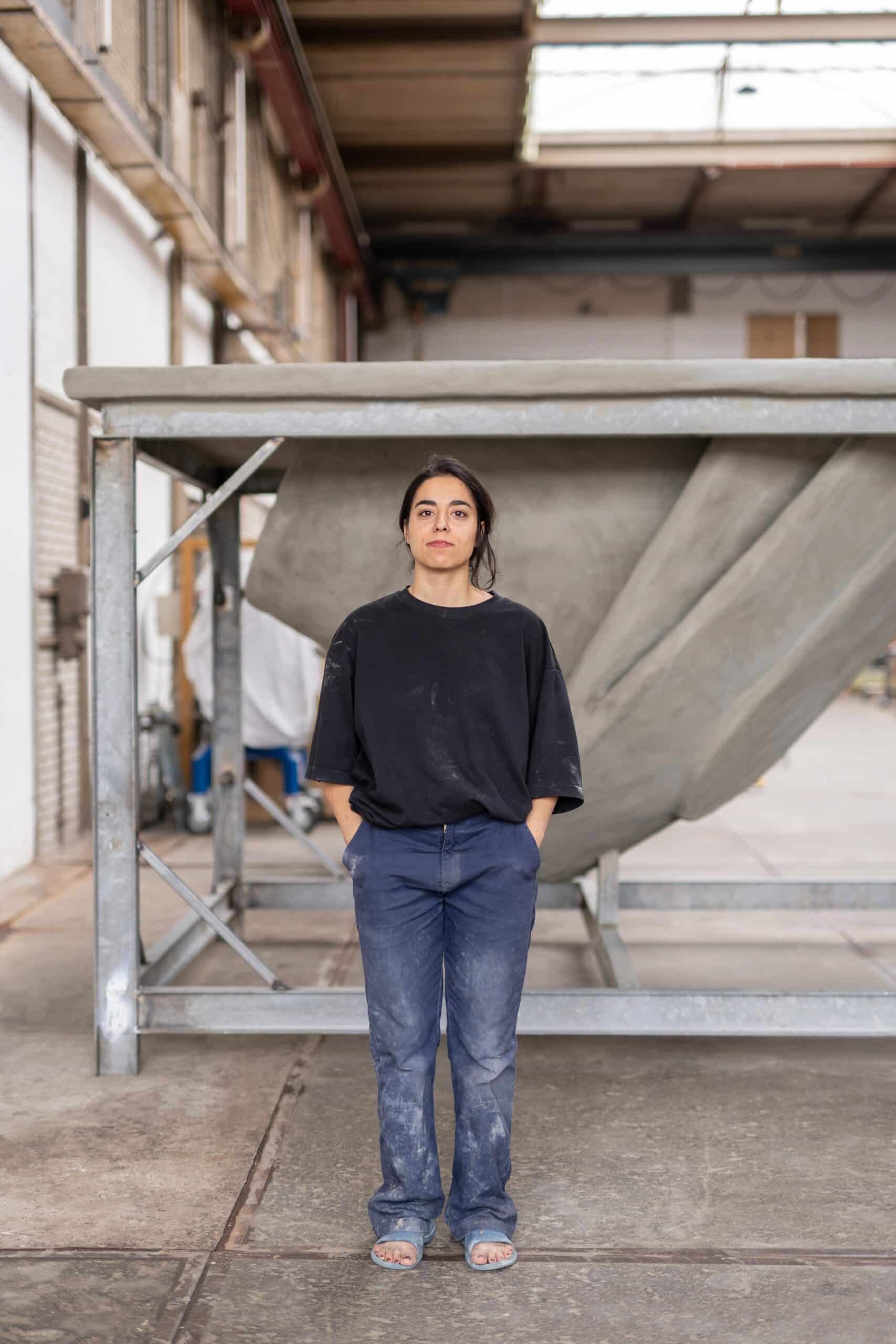 Narges Mohammadi
Narges Mohammadi© Lotte van Uittert
There is no real reason for why Mohammadi works with spatial media, she notes, except that there’s simply so much that she likes about it. Specifically, she thinks about the lighting, the fact that you can walk around a work of art like this, and that you automatically compare its dimensions with your own body.
In addition, she likes the feeling that you can create something from scratch that actually stands out in a space. She finds it important to be actively involved with the material herself, even when she works in collaboration with others on projects like the concrete teacup.
Place, process, and feeling
Mohammadi wants all the material of a work to pass through her hands, even when it sometimes takes her a few months before she has mastered a new technique. This intensive interaction creates space for surprises and for deviations from the original idea. For her, that attentive way of working is akin to when your mother or your grandmother cooks for you: their food always tastes better than food from tins and sachets.
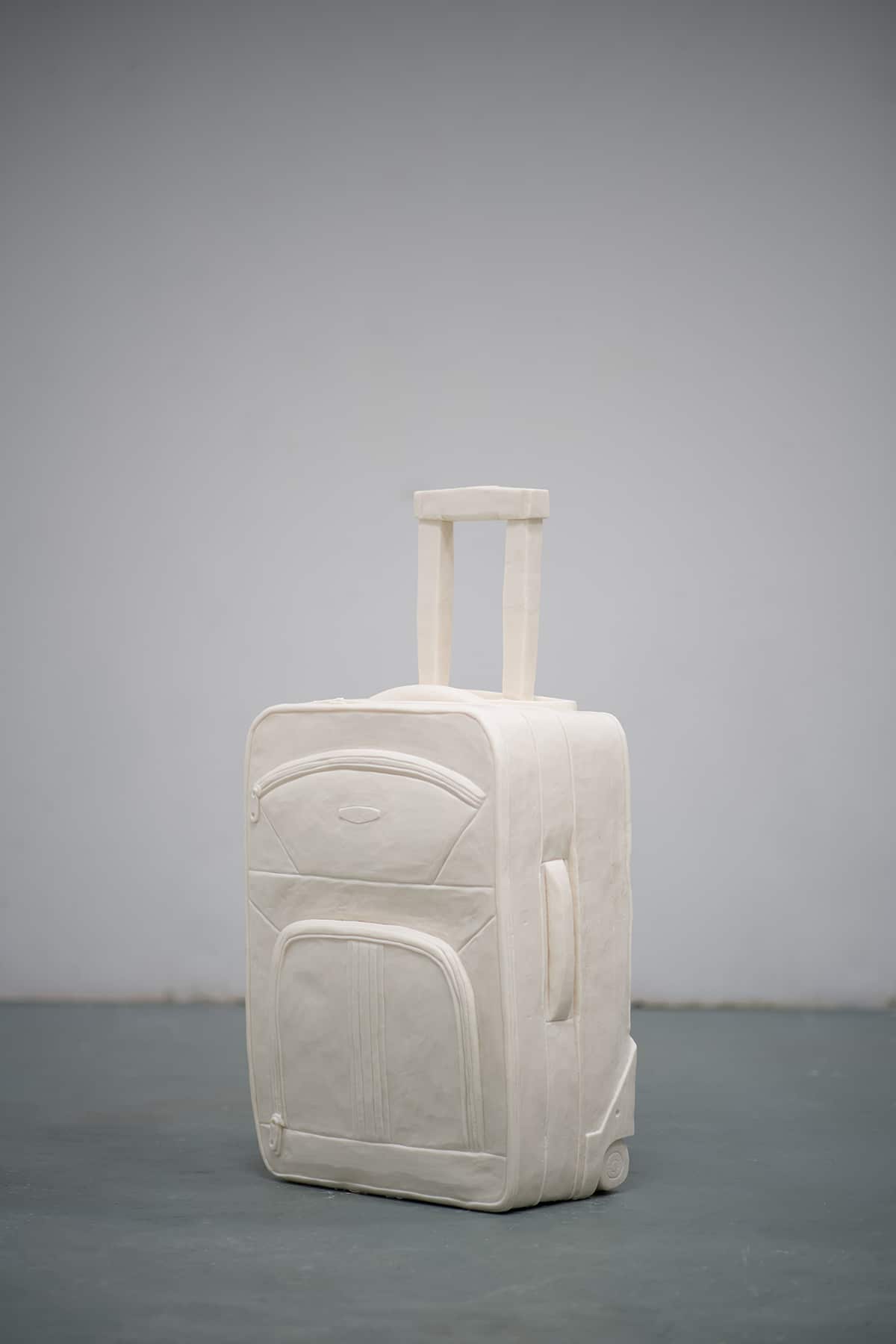 Mohammadi created a travel suitcase made of soap for an exhibition about life during the Covid 19 pandemic.
Mohammadi created a travel suitcase made of soap for an exhibition about life during the Covid 19 pandemic.© Narges Mohammadi / photo: Julia Sterre Schmitz
The process is really part of the artwork, even if you can’t always immediately see it. A good example is Schoon Verlangen (Clean Desire, 2021), which she made for an exhibition about life during the Covid 19 pandemic. The sculpture is made of soap and has the shape of a travel suitcase. That object, of course, refers to travel, or rather the desire for it. Leaving home for a long period of time wasn’t an option for months on end.
Simultaneously, it’s difficult to separate the soap from the Dutch government’s advice to wash your hands time and again. Although, try not to think about that when Mohammadi says that she carved the suitcase out of the enormous block, using just her fingernails. The use of soap carries so much more meaning than if she had opted for a traditional sculpting material such as stone or bronze.
In-between spaces
Mohammadi often makes works of art for a specific exhibition. As a result, they are often site-specific and attuned to the location. At the same time, her art is strongly rooted in her own inner world, such as her own memories, feelings, and desires.
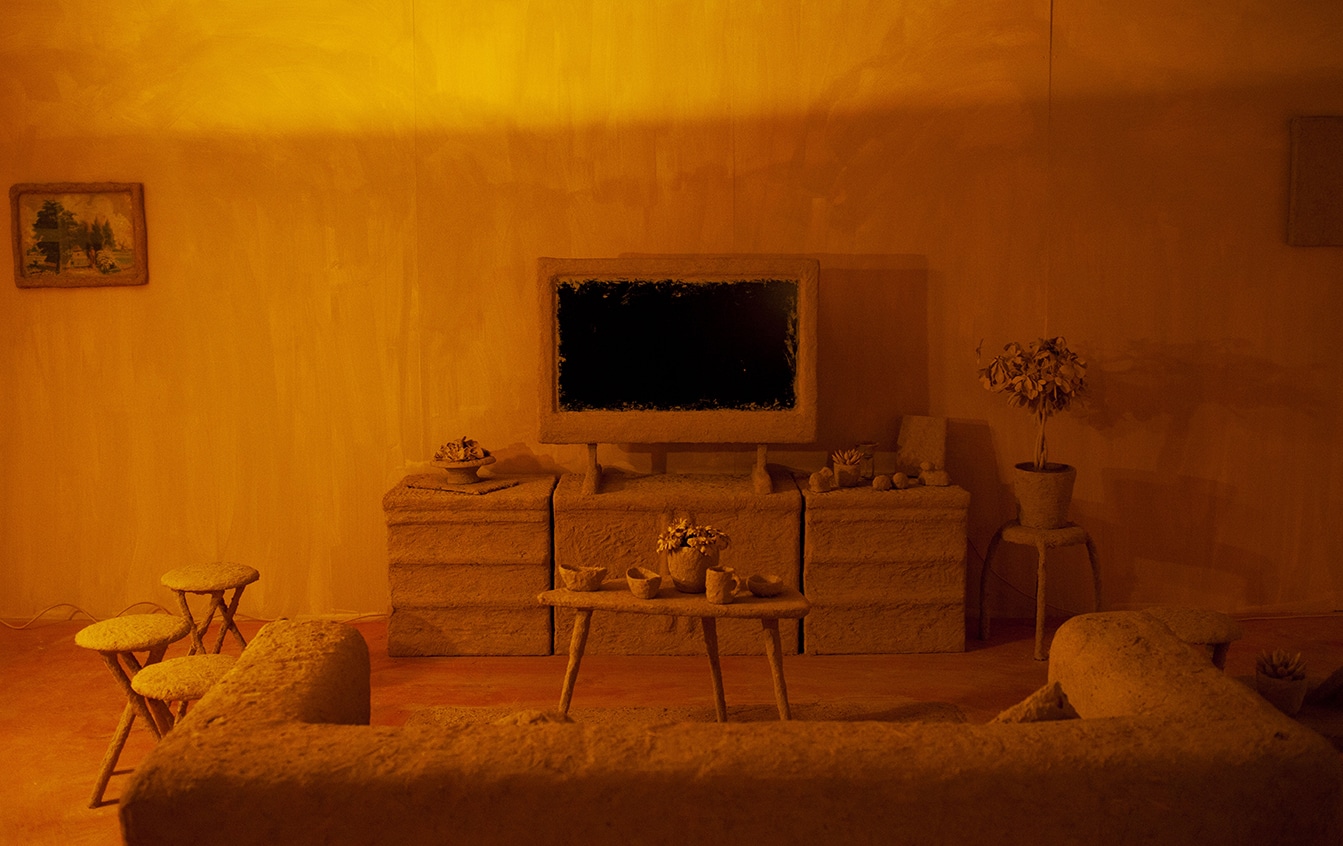 'Perhaps it is only in the warm summer breezed stones that I feel at home', installation with loam and furniture, 2019
'Perhaps it is only in the warm summer breezed stones that I feel at home', installation with loam and furniture, 2019© Narges Mohammadi / photo: Io Sivertsen
She tells about the genesis of the aforementioned Almost There, which is a version of an earlier installation: Perhaps it is only in the warm summer breezed stones that I feel at home (2019). It simply didn’t seem right to her to rebuild that precise work of art in a different location. Besides, she felt different now. After all, aren’t outside and inside worlds closely related? Everything you see, hear or smell can bring up something else in your thoughts.
What goes on inside can be brought to the outside world as a tangible work of art. A good example is the two-part installation Attempts for refuge (2021). It consists partly of a tower of upright, loam-covered mattresses that bend towards each other. It looks like they want to hug each other. A childhood memory of Mohammadi was the source of inspiration for this: taking a nap in her mother’s bed, hand in hand with her brother.
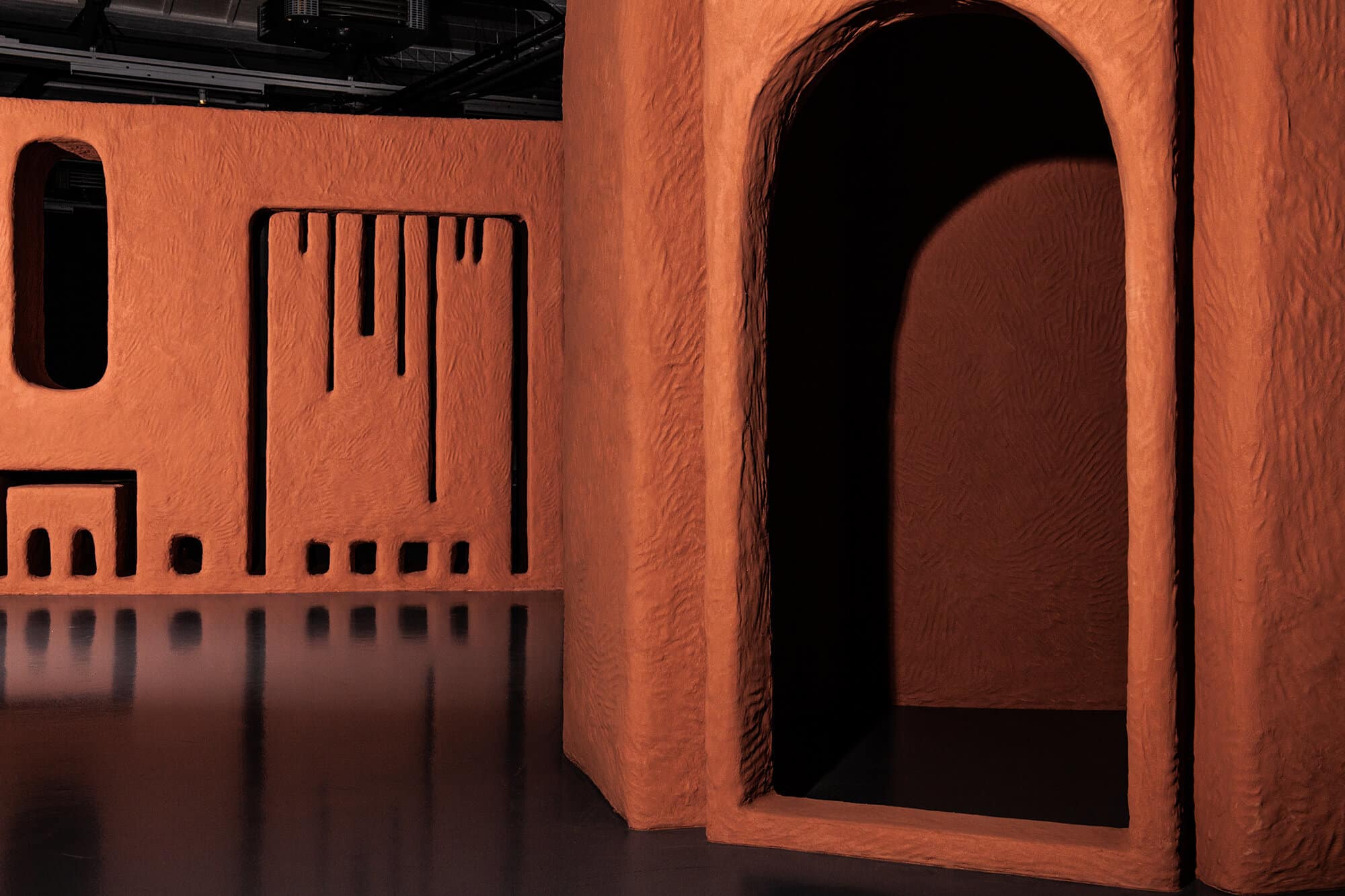 'Attempts for refuge', installation with loam, wood, mattresses and pillows, 2021
'Attempts for refuge', installation with loam, wood, mattresses and pillows, 2021© Narges Mohammadi / photo: Marysia Swietlicka
The other part of the installation is a hallway with a closet, all made from loam. This too is based on memories – this time of Mohammadi visiting a relative who regularly hosted lots of guests. Whenever it got too busy for her, she’d go to the hallway. There she would look at all the coats and shoes and fantasise about being an adult herself. She describes that corridor as an in-between space: not really inside and not really outside, a place where nothing and everything happens at the same time.
Somewhat hesitantly, Mohammadi argues that every work of art is also an attempt to create a space for herself in a world in which she doesn’t really feel at home. That’s why she has such a preference for working with everyday, homely things – from suitcases to mattresses. These are also things that we as people deal with wherever we are. You can always connect them to something from your own life. By combining familiar forms with the ‘wrong’ materials, Mohammadi believes that an in-between space is created. A space, which slowly becomes filled with the viewer’s interpretations and associations. But there is always room for the imagination.
Making concrete softer
One of the places where Mohammadi doesn’t feel at home, is the art world, specifically the commercial aspects of it. For a long time, she refrained from participating in art fairs, until she was asked to be a part of the latest edition of Unfair Amsterdam.
How did she manage to find her place in the art fair system? In order to do this she created a new work: the aforementioned Concrete Exchange, the teacup made from concrete. That material immediately brings to mind buildings, and – certainly in the strained Dutch housing market – money, a lot of money.
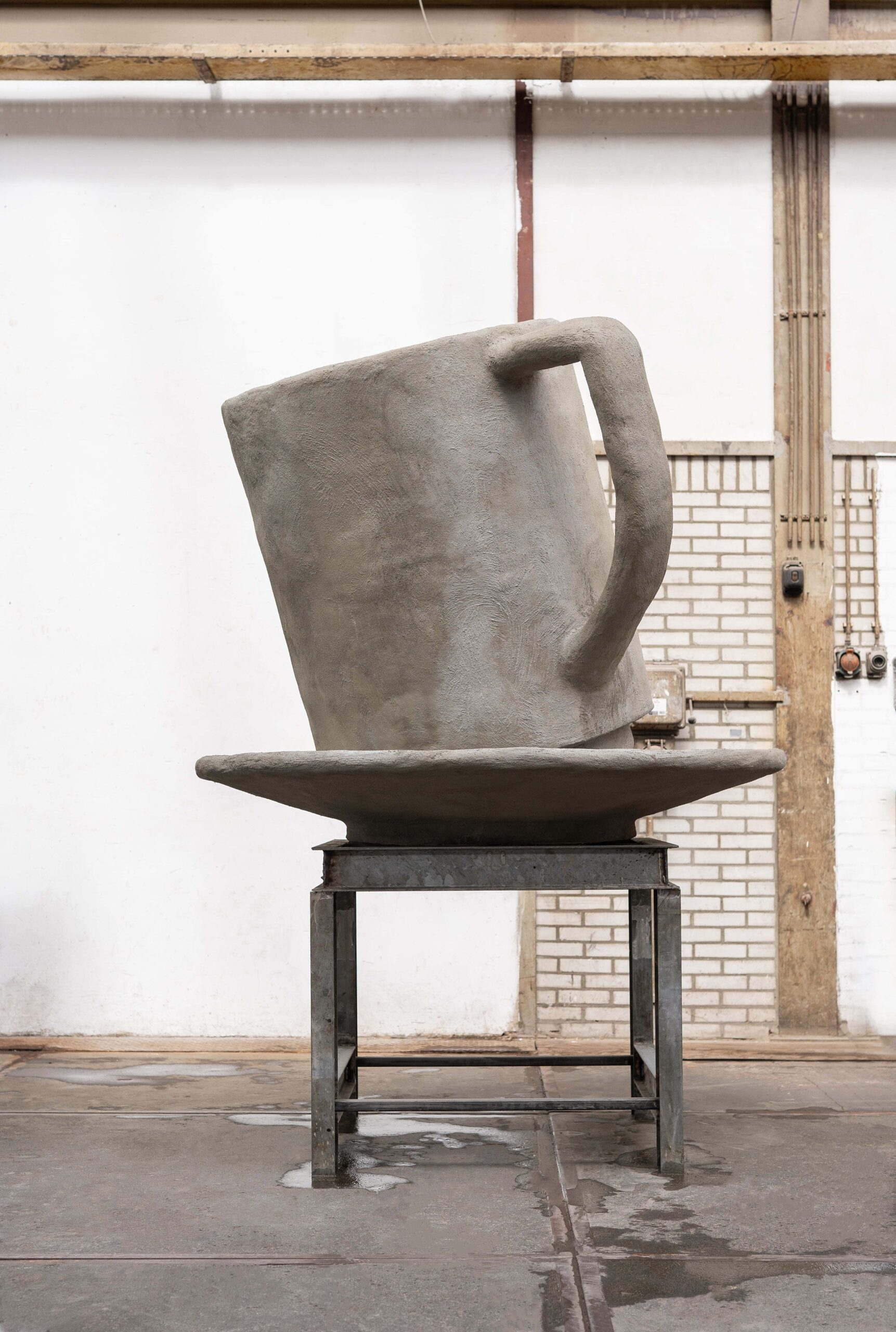 The combination of the cup, concrete and the suggested movement make the material feel a little softer
The combination of the cup, concrete and the suggested movement make the material feel a little softer© Narges Mohammadi / photo: Lotte van Uittert
The shape is just a bit more human and personal: it’s the kind of cup that, in Mohammadi’s memory, was in every Afghan household. At the same time, she sees the object as a symbol against gentrification, which is often accompanied by the emergence of all kinds of hip coffee shops. The combination of the cup, concrete and the suggested movement (is it being lifted, or is it falling?) make the material feel a little softer – intimate even. At the same time, the association with buildings remains: the material itself remains rooted in where it comes from.
There are two variants of the artwork: the positive (the teacup) and the negative (the print of that cup in a concrete surface). The positive piece is being donated to a neighbourhood initiative in the Randstad; organisations can register their interest. The negative piece can be ‘purchased’. However, you don’t need to have money in order to buy it – in fact, it can’t be purchased with money. Instead, the buyer is being asked to invest their time – equal to the amount of time Mohammadi and her team put into making the piece.
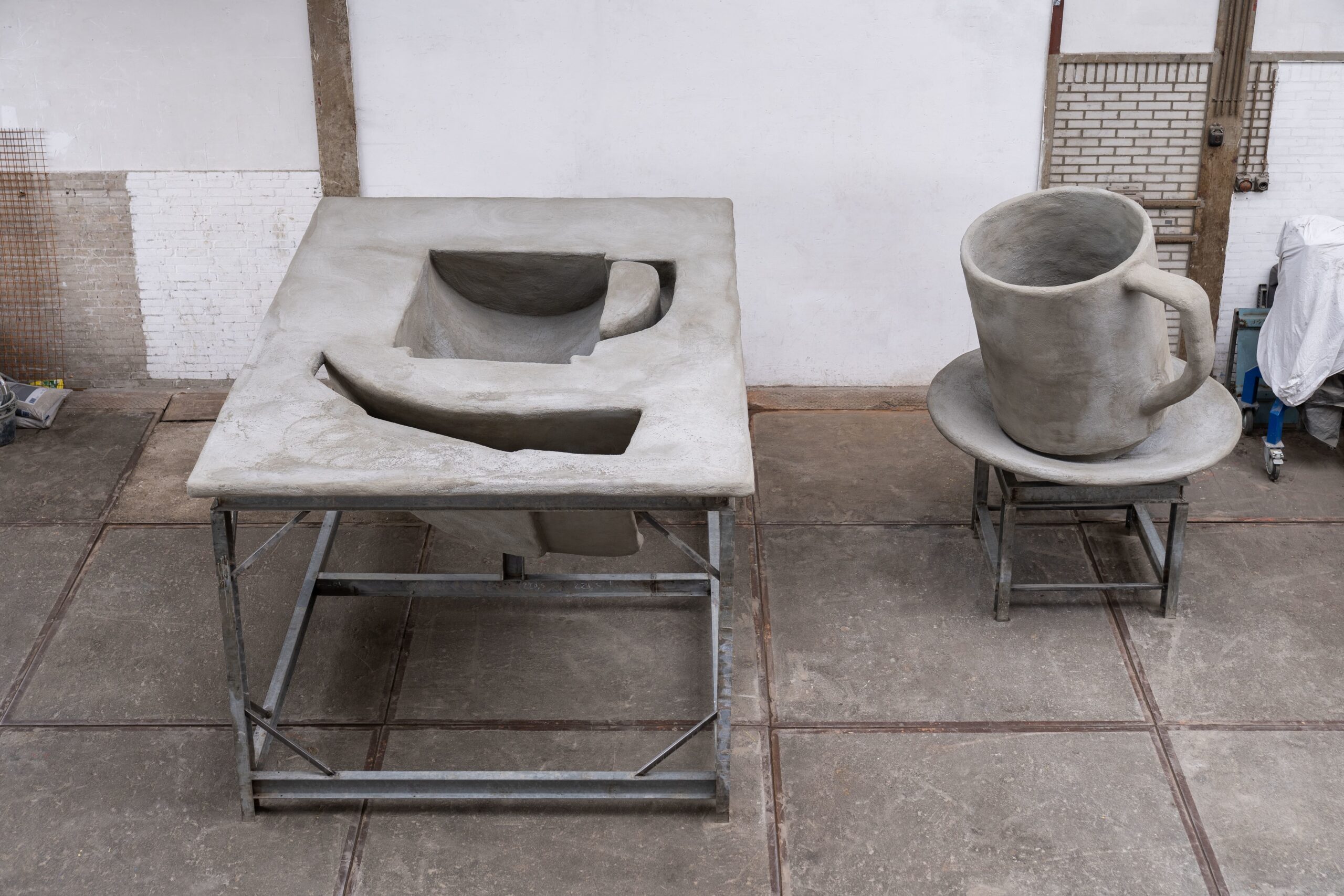 The positive and the negative variants of Concrete Exchange.
The positive and the negative variants of Concrete Exchange.© Lotte van Uittert
The buyer is being invited to invest that time in the neighbourhood initiative chosen to receive the positive teacup. For example, they might provide practical support, or they might attend or organise activities. Through Concrete Exchange, Mohammadi has found a way to find a place in the (art fair) world: by showing that money can’t compete with solidarity and connection.


